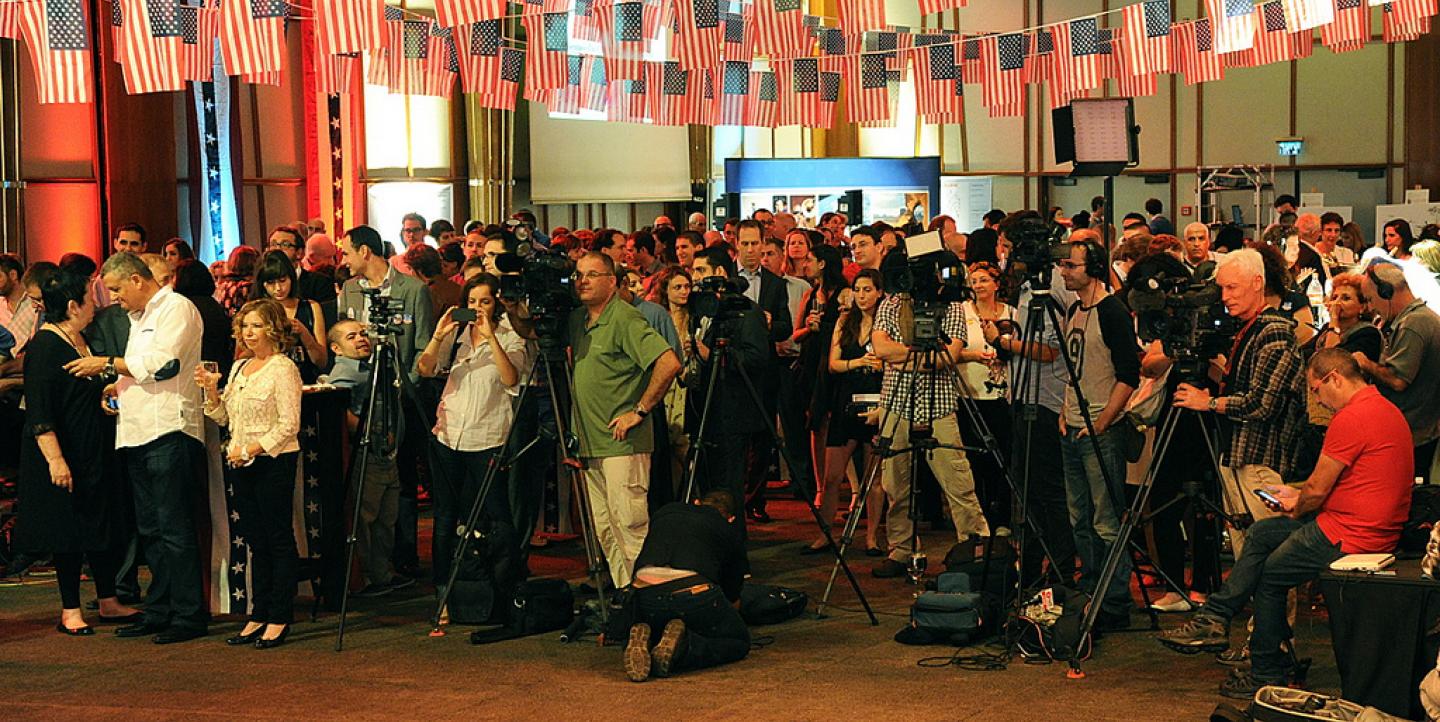Since Donald Trump’s election confounded pollsters and journalists alike in November, there has been no shortage of post-mortems in the news industry. And with the hostile relationship between the Trump administration and the media set to continue, journalists are still figuring out how to accurately cover America’s complicated political topography.
As part of a symposium on technology, politics and the media, the John S. and James L. Knight Foundation recently held a panel discussion on how journalists can do a better job listening to and accurately reflecting the American electorate. They identified several areas where media can work on improving coverage.
Diversity
From accusations of systemic elitism in the media to issues with racial and gender representation, the panelists noted that journalists covering the election perhaps lacked diversity in certain categories.
“There are too many reporters who live in Washington, D.C. and not enough reporters who live across America,” said Sally Buzbee, executive editor of the Associated Press. Though she emphasized geographic diversity, she also cited ideological, socioeconomic, racial and gender diversity as areas of improvement for journalism.
Nate Silver, editor-in-chief of FiveThirtyEight, also touched on issues of under-representation when discussing media “insiderism.”
“Part of it does have to do with media groupthink and the fact that you have a relatively small number of people...that have a huge amount of influence on the way other newsrooms around the country behave,” he said. “I think the insider method of reporting failed a little bit in this election.”
Polling and statistical literacy
Polling has been an oft-discussed topic in the election’s aftermath, especially when nearly every major poll predicted that Hillary Clinton would easily win the presidency. The group agreed the media relied too heavily on polls in the weeks leading up to the election, noting two key factors in accurately portraying polling data: balance and statistical literacy.
Buzbee said journalists should view polling as only one option in the journalistic toolbox and not base all of one’s coverage on such data. Likewise, Silver argued that polling has become a scapegoat for journalists; he emphasized the need to communicate polls’ flawed nature when reporting on them.
“People were taking very ambiguous interpretations of the polling and taking it to mean that Clinton was a sure thing,” he said. “People need to find more ways to express uncertainty.”
.jpg) Buzbee agreed.
Buzbee agreed.
“How can we actually communicate to normal people, who are not statistics experts, the validity and uncertainties in polling in a much more visceral and accurate way?” she asked rhetorically. “I need to...explain to people that this is one tool in the toolbox with drawbacks, and I don’t think the language we use right now is effectively doing that.”
She and Silver also emphasized the need for journalists to learn statistical literacy so they are in the best position possible to convey polling data’s strengths and weaknesses.
Producing content people care about
Amalie Nash, West Region executive editor at USA Today, said that news outlets should focus on creating content that is relevant to its audience’s interests and concerns. In the wake of the election, many argued that the media did not cover, or take seriously, issues that were important to Trump voters — and that as a result, they failed to understand Trump’s appeal to large swathes of the American electorate.
“I think one of our challenges that we’re gonna have to overcome is figuring out a way to make a lot of this coverage more relevant and feel more relatable and representative of people from across the country,” Nash said.
But it’s not just a matter of covering topics people are interested in — it’s also about finding the best way to present this content to them, Buzbee said.
“I want people to consume the rich, deep, nuanced reporting,” she said, “but maybe I need to present it to them in a 32-second [video] graphic that’s going to pull in a 19-year-old.”
Silver also suggested news organizations experiment more often with different content and forms of delivery.
“I think there’s a lot of conservatism when someone tries to do something new, whether it’s BuzzFeed, or Gawker, or FiveThirtyEight,” he said. “People will kind of roll their eyes at all of those organizations because they do things differently. I think we need more actual innovation in forms of journalism, and not just the business model.”
Watch the full discussion below:
Main image CC-licensed by Flickr via U.S. Embassy Tel Aviv. Second image CC-licensed by Flickr via Mark's Postcards from Beloit.

